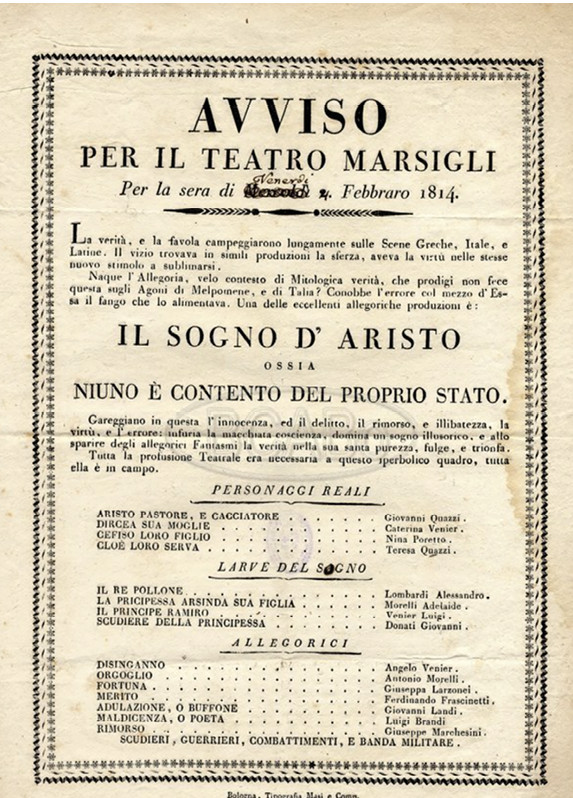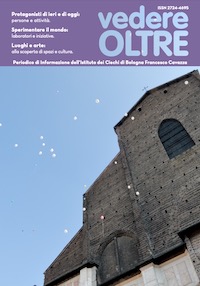Our journey of Bologna’s theatres leads us to the Marsigli-Rossi Theatre, located in the palace of the same name on Strada Maggiore and built by Bartolomeo Laurenti for Senator Giuseppe Filippo Calderini in 1710. First intended for the entertainment of its owners, the space (3 boxes, 24 benches, a gallery, café and trattoria, accessed from Vicolo Bolognetti) was opened to the public in the ’90s and offered prose and operas by the most famous composers of the time, such as Paisiello, Piccinni and Galuppi.

The turning point came with the arrival of the French, in 1796, when Angelo Marsigli entrusted it to the Society of Patriots. Transformed into the Civic Theatre, it was attended by an increasingly large audience to whom it offers the works of Alfieri and Voltaire for educational purposes. The local newspaper wrote with enthusiasm: “It will remove the old barrenness and indecency from the programs. The scenes will be of moral virtue. The people will greedily suck the milk of the love of freedom and country.”
.jpg)
The most important names in Bolognese life (such as Luigi Zamboni or Pelagio Palagi) performed political evenings singing patriotic anthems until with the return of the Austro-Russians in June 1799 the programming changed. Tragedies alternated with the sentimental works of Cimarosa and Paisiello and concerts by virtuosos such as Paganini. Then, in May 1821, the City’s Performances Committee noted that “the stairs are cramped and uncomfortable, the stage columns are unsafe, the stage is unfit for use, the trellis is shabby, and the machines worn out.” And because restoration would cost too much, the theatre was abandoned. “The roof looked like a large, hulking umbrella, through which patches of sky shone through. Grass grew in the stalls, and the chickens had free entry without risk of being challenged.” Eventually, it was torn down and the space was later used for construction rubble storage.





.png)